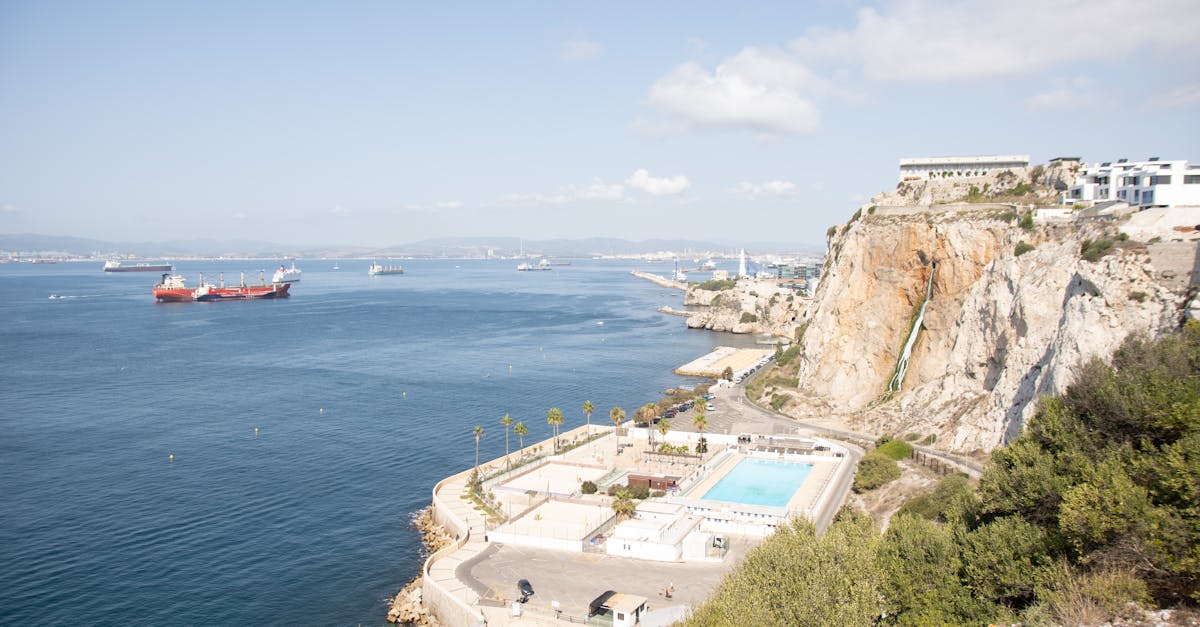Seven Countries That Don't Have An Airport
In an era where air travel is synonymous with global connectivity, it’s fascinating to discover that some nations operate entirely without airports. These countries, though lacking in aviation infrastructure, are rich in culture, history, and innovation, finding unique ways to connect with the world. This article delves into the intriguing reality of seven such countries, exploring how they manage their transportation needs, the historical and geographical reasons behind their lack of airports, and the alternative methods they employ to maintain connectivity. By examining these nations, we gain insight into the diverse ways in which societies adapt to their environments and maintain their global presence without the convenience of air travel.
Vatican City: The Heart of Spiritual Connectivity

Vatican City, the world’s smallest independent state, is nestled within Rome, Italy, and spans just over 100 acres. Despite its size, it holds immense spiritual significance as the center of the Roman Catholic Church. The absence of an airport is primarily due to its limited area and the proximity to Rome's Leonardo da Vinci International Airport, which serves the needs of visitors and dignitaries alike. Vatican City relies on this nearby airport and the extensive rail and road networks of Italy for logistics and transportation. Its unique status as a city-state allows it to thrive without the need for an airport, focusing instead on its religious and cultural missions.
Liechtenstein: A Principality with Scenic Routes

Liechtenstein, a picturesque principality nestled between Switzerland and Austria, is another country without an airport. Its mountainous terrain and small size make the construction of an airport impractical. Instead, Liechtenstein benefits from its strategic location near major airports in Zurich, Switzerland, and Innsbruck, Austria. The country boasts a robust network of well-maintained roads and railways, facilitating easy access to these airports. This connectivity supports Liechtenstein's thriving economy, particularly its financial services and manufacturing sectors, while preserving the natural beauty and tranquility that define this alpine nation.
Monaco: Luxury and Connectivity on the French Riviera

Monaco, a glamorous microstate on the French Riviera, is renowned for its luxury, casinos, and the prestigious Monaco Grand Prix. Despite its affluent status, Monaco does not have an airport due to its compact size and densely populated urban landscape. Instead, it relies on Nice Côte d'Azur Airport in France, just a short drive away. Monaco’s heliport offers frequent helicopter services to Nice, providing a swift and scenic alternative for travelers. This efficient transportation network supports the principality’s tourism and business sectors, ensuring that Monaco remains a vibrant hub of activity without the need for an airport.
San Marino: A Historical Enclave with Modern Solutions

San Marino, one of the world’s oldest republics, is perched on the slopes of Mount Titano, surrounded by Italy. Its rugged terrain and limited space have precluded the development of an airport. Instead, San Marino capitalizes on its proximity to Rimini’s Federico Fellini International Airport, located just across the border in Italy. The country’s well-developed road network facilitates easy access to this airport, supporting its tourism industry and allowing residents to travel internationally with ease. San Marino’s focus on preserving its rich history and cultural heritage aligns with its decision to forego an airport, maintaining its charm and authenticity.
Andorra: A Mountainous Haven with Strategic Access

Nestled in the Pyrenees between France and Spain, Andorra is a small, mountainous nation known for its ski resorts and duty-free shopping. The challenging topography and limited flat land make airport construction impractical. Instead, Andorra relies on nearby airports in Barcelona, Spain, and Toulouse, France, for international travel. The country’s comprehensive road network, including well-maintained highways, ensures seamless connectivity to these airports. Andorra’s strategic location and efficient transportation infrastructure support its thriving tourism industry, drawing visitors year-round to experience its natural beauty and recreational opportunities.
Palestine: A Region with Complex Connectivity Challenges

Palestine presents a unique case as a region with political and logistical complexities affecting its connectivity. The territories of the West Bank and Gaza Strip do not have operational airports due to geopolitical constraints and security concerns. Palestinians primarily use airports in neighboring Jordan and Israel for international travel. The region’s transportation network, including roads and border crossings, is crucial for movement and trade. Despite these challenges, Palestine continues to foster cultural and economic exchanges, highlighting the resilience and adaptability of its people in maintaining global connections under difficult circumstances.
Gibraltar: A British Overseas Territory with a Unique Approach

Gibraltar, a British Overseas Territory located on the southern tip of the Iberian Peninsula, does not have a traditional airport within its borders. Instead, it utilizes the Gibraltar International Airport, which is uniquely positioned with its runway crossing the main road into the territory. This unusual setup requires the road to be closed during aircraft takeoffs and landings, showcasing Gibraltar’s innovative approach to aviation infrastructure. The territory’s strategic location at the entrance to the Mediterranean Sea ensures its significance in maritime and aviation routes, despite the unconventional airport arrangement.
Connectivity Beyond Airports: Embracing Alternative Transport Modes

The absence of airports in these seven countries highlights the diverse methods nations employ to maintain connectivity. From leveraging nearby international airports to developing efficient road and rail networks, these countries exemplify adaptability and resourcefulness. Their unique geographical, historical, and political contexts shape their transportation strategies, offering valuable insights into how societies can thrive without direct access to air travel. As global challenges such as climate change and sustainability become increasingly pressing, these nations provide compelling examples of how alternative transport modes can effectively support connectivity and economic growth.







